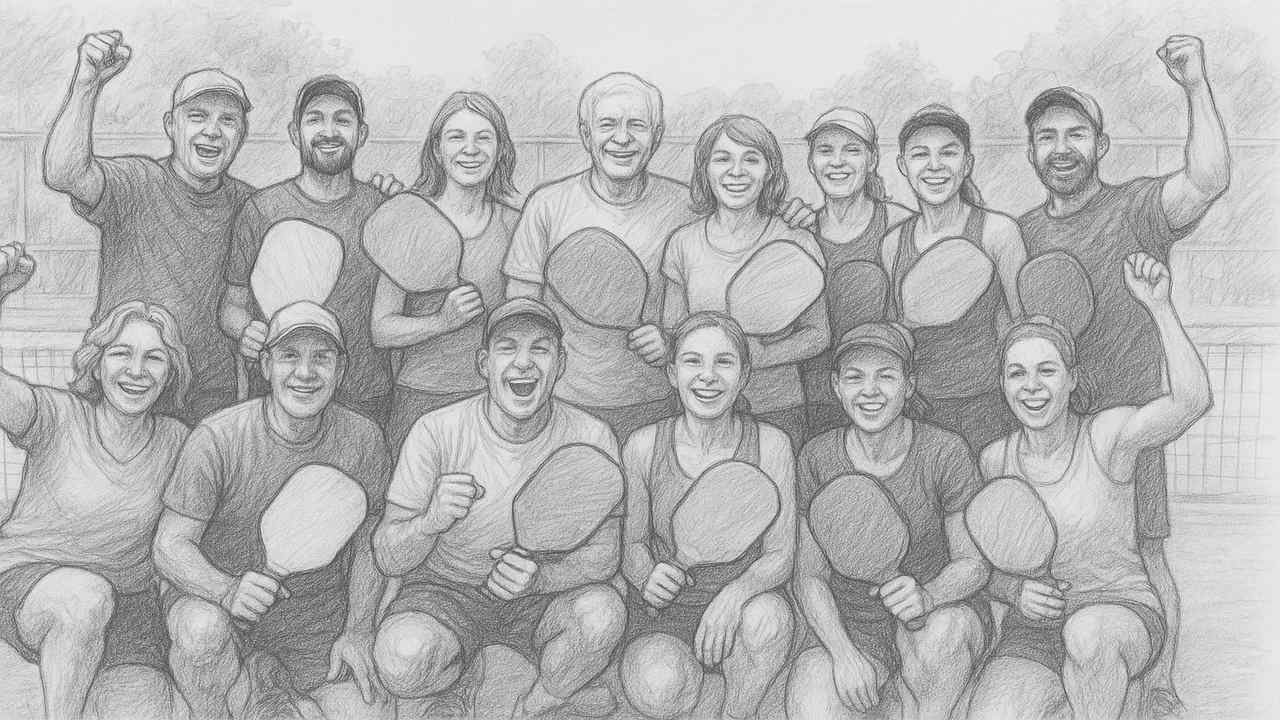Pickleball’s Cultural Impact: How the Sport Brings Communities Together

A Game That Unites
Pickleball has transcended its 1965 backyard origins to become a cultural force, uniting 36 million players worldwide by 2025. More than a sport, it’s a social phenomenon that brings communities together, fostering connections across generations and cultures. From local courts to global events, pickleball’s low-impact nature and doubles play—making up 80% of games—create spaces where laughter and teamwork thrive. Its rise has sparked cultural trends, from celebrity endorsements to fashion, embedding it into the fabric of modern life. This Pikipedia entry explores how pickleball builds social bonds, influences cultural trends, and leaves a legacy of connection, showing why it’s a game that truly unites.
Cultural Moments
-
1976: First pickleball tournament in Washington sparks community interest.
-
2019: Anna Leigh Waters, aged 12, becomes the youngest pro, inspiring youth.
-
2023: “Pickleball paddle” trends as a top Google search, reflecting mainstream appeal.
-
2024: U.S. Open in Naples draws 50,000 spectators, showcasing global unity.
Building Social Bonds – Communities on the Court
On any given day, a pickleball court buzzes with the sound of paddles striking balls and players laughing together, a testament to the sport’s power to forge social bonds. With 36 million players in 2025, pickleball has become a haven for connection, especially for seniors, 70% of whom report reduced loneliness through play. The sport’s doubles format, comprising 80% of games, encourages teamwork, as partners call “mine” or “yours” during rallies, building trust. Community events like round-robins and clinics further strengthen ties, turning courts into gathering spots where strangers become friends. In small towns and big cities alike, these spaces welcome players of all ages, creating a sense of belonging that transcends the game itself.
“It’s not just a game; it’s a way to bring people together,” reflects Clara, a 72-year-old player who found lifelong friends on her local court.
Cultural Influence – From Courts to Mainstream
Pickleball’s cultural footprint has grown far beyond the court, weaving itself into the fabric of modern life. Celebrities like LeBron James, Tom Brady, and Kim Kardashian have embraced the sport, investing in teams or promoting events, amplifying its visibility. Media coverage has soared, with CBS, Fox Sports, and ESPN broadcasting tournaments, and “pickleball paddle” trending as a top Google search in 2023. The sport has even influenced fashion, with paddle-print dresses and athletic wear becoming popular. Tournaments like the U.S. Open, drawing 50,000 spectators in 2024, have turned pickleball into a cultural event, where players and fans celebrate its unique blend of competition and camaraderie.
“Pickleball has become a cultural phenomenon,” notes a commentator, capturing its rise from niche pastime to mainstream sensation.
This cultural wave has made pickleball a symbol of connection, inspiring trends that resonate far beyond the sport’s boundaries.
A Legacy of Connection – Impact Across Generations
Pickleball’s cultural impact lies in its ability to connect generations, creating a legacy of inclusivity and community. Over 1 million kids joined in 2023, playing alongside seniors who value the sport’s low-impact nature, bridging age gaps through shared rallies. Adaptive pickleball programs for disabled players have expanded, ensuring everyone can participate, while charity tournaments like the U.S. Open raise funds for local causes, strengthening community ties. This inclusivity fosters a global culture where courts become spaces for cultural exchange and celebration.
-
Intergenerational Play:
-
Seniors mentor youth, teaching dinks while learning new strategies.
-
Kids bring energy, inspiring older players to stay active.
-
-
Inclusivity:
-
Adaptive programs: Wheelchair pickleball events grow in 70+ countries.
-
Charity events: Tournaments support local schools, health initiatives.
-
-
Cultural Exchange:
-
Global events like the English Open unite diverse players.
-
Pickleball’s legacy of connection ensures it remains a sport for all, inspiring communities worldwide.
Conclusion
Pickleball’s cultural impact has turned a backyard game into a global movement, uniting 36 million players through shared courts and stories. Its ability to foster social bonds, influence trends, and connect generations creates a legacy that transcends the sport itself. Step onto a court, join a round-robin, and share the joy with others. Your participation helps pickleball’s community thrive, inspiring new connections and legendary moments that echo across cultures and generations!